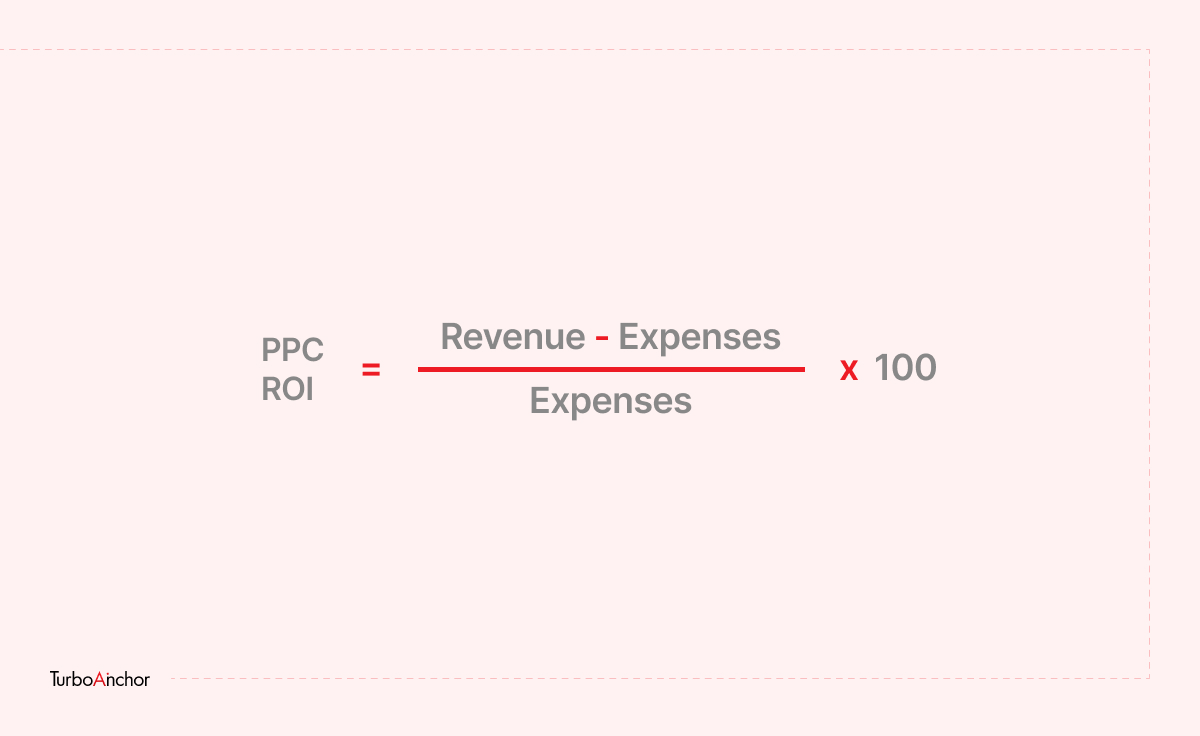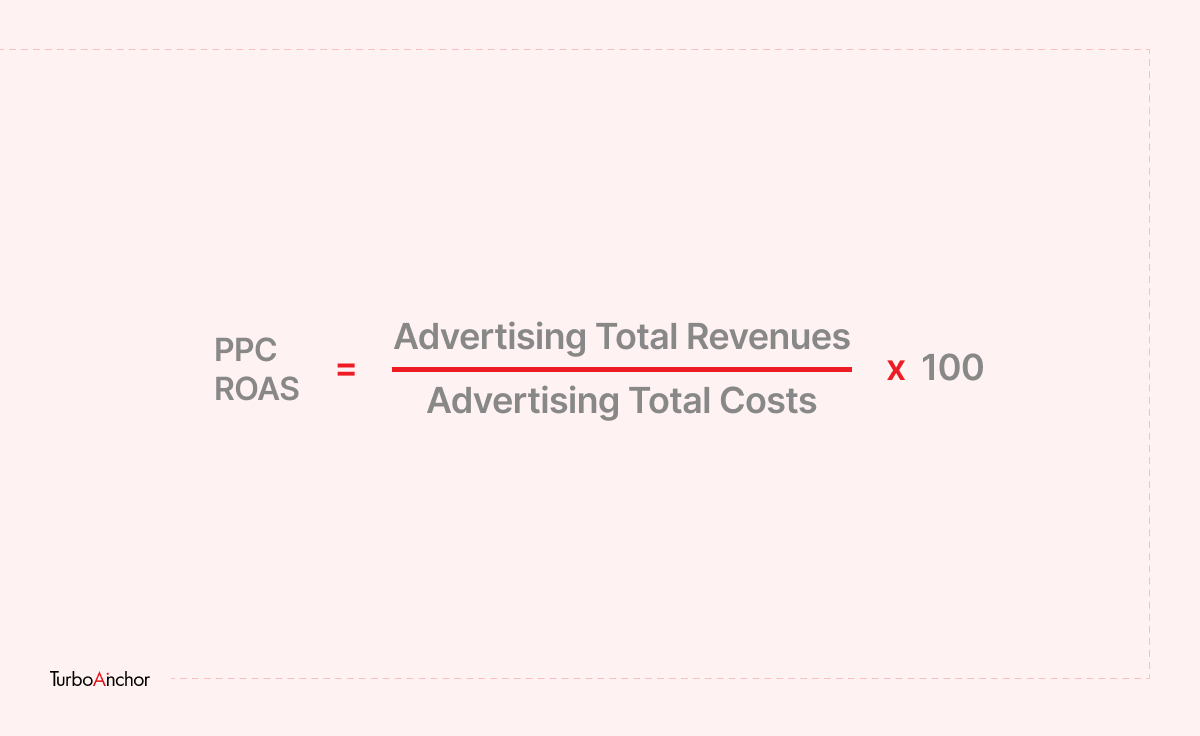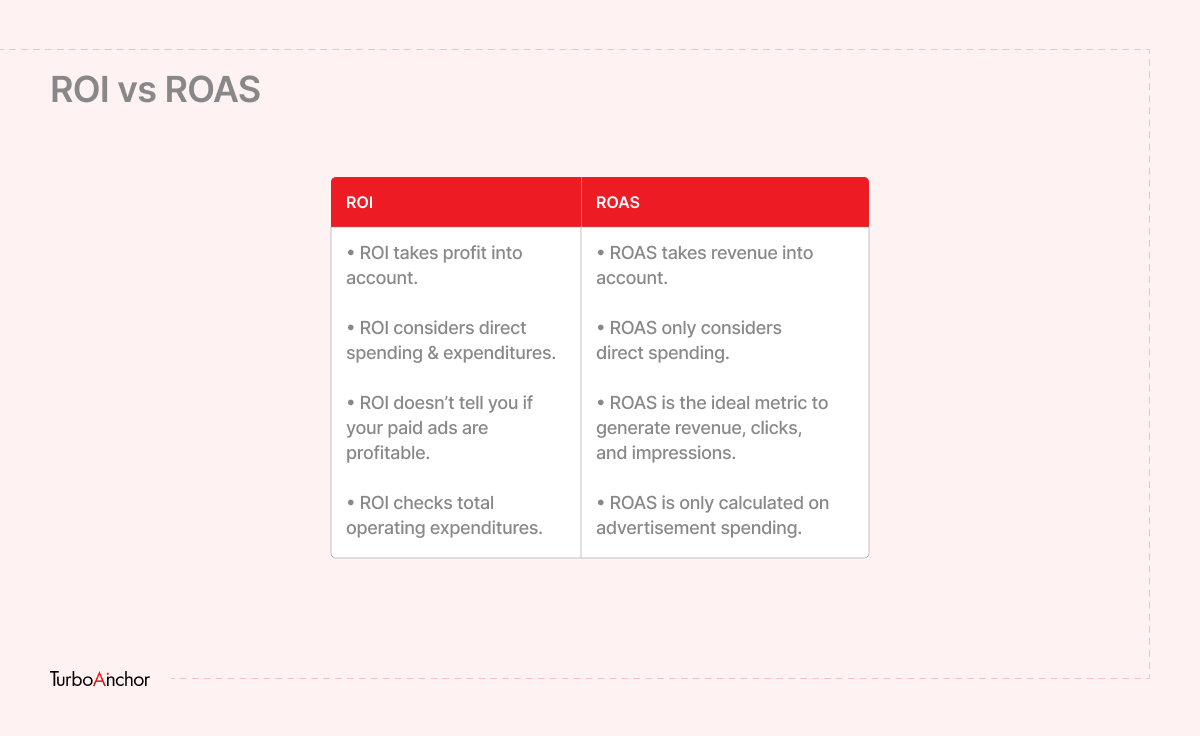Before we get started with how to measure an ROI for PPC campaigns? Let’s get a little familiar with what is PPC ROI?
The sole purpose of any PPC campaign is to generate sales. So, on the other hand, if there’s a PPC ad that ain’t getting the desired results like clicks or driving any sales is just a lost cause. But the question here is how to check out which campaigns work for us? You will not understand which campaigns are working and underperforming without tracking PPC ROI.
How do Calculate PPC ROI?
One of the primary responsibilities of an advertiser is measuring and calculating the ROI of PPC campaigns for a business, as considered by Google. On the other hand, it’s essential to keep accounts on vanity-type metrics, such as the number of clicks and impressions; it’s usually more helpful to understand how your PPC campaigns are contributing to the success of your business.
Things to Notice,
When calculating the ROI from your PPC campaigns, keep in mind all expenses in your total cost, like:
Ad spend
Ad Spend is the amount of money spent on advertising on social media platforms (like Facebook, LinkedIn), or search engines (Google or Bing). These metrics help you determine how well your ad is performing.
You can measure PPC ROI by following this formula:

According to Google, for every $1 spent on a PPC campaign in Google Adwords, businesses earn average revenue of $2. [1]
How to interpret ROI?
A business’s ROI can be measured using different metrics that indicate its profitability. Before you start calculating ROI, things you need to keep in mind are that. Firstly, ROI is represented as a % because it is generally easier to understand compared to when represented in : (ratio). Second, of the ROI calculation final results are in the numerator (e.g. ⅔) therefore, they can be either positive or negative.
So, suppose your ROI calculations get a positive return percentage. In that case, it means that total returns exceed total costs, making it profitable. On the other hand, if the calculations have a negative return percentage, total costs exceed total returns, resulting in business loss.
How to calculate ROAS?
ROI is most commonly referred to as Return on Ad Spend or ROAS.
For example:
We are running a Google Ads campaign, aiming for 12$ for every 3$ we spend.
To perform that calculation will use this formula:
Sales ÷ ad spent × 100% = Target ROAS
So result after using this formula would be in this form:
$12 in sales from campaign ÷ 3$ ad spend (clicks) × 100% = 400% target ROAS

What is the difference between ROI and ROAS?
People often get mixed up between ROI (return on investment) & ROAS (return on ad spend) but actually they are not the same thing. Well speaking of the difference between them well we can say,
ROI: Metrics is about looking at your PPC spend more strategically in your advertising and can include additional expenses. It includes the profit you get from ads compared to the amount spent on them. Contrarily, ROAS is about more strategic spending and is directly focused on PPC profitability.

If you are planning to run a long-term campaign plan then you should probably go for ROI. To understand it more deeply let’s go with an example. If you are running a Winter promotion campaign like “Winter discounts” but getting enough sales in return, then in that case you can go with ROI to show its inefficiency.
FAQs
What is a good ROI for advertising?
Advertising your business can be a hassle if you aren’t moving with a proper game plan. You must observe all available options and figure out effective methods that suit you the best. Encountering many trials and errors is a part of progress. Getting an advertising ROI between 25%- 50% PPC campaign is considered good. You can measure that by tracking your leads.
What are some tools through which you can measure PPC ROI?
Following are some tools that can help you measure ROI,
How can PPC increase ROI?
- Firstly, be smart while investing, examine each keyword before you invest on keywords that end up performing poorly, also keep in mind to regularly update your keyword list for any chances of errors.
- Make sure the site is easy to access by improving landing page experience.
- Make adjustments in bidding according to devices.
- Go for remarketing and location-based targeting.
- You can use ad extensions to display extra business information with your ad, like an address, contact details, rating, or links to similar pages.
How to calculate your Google Ads ROI?
It’s not much of a magic trick that you can’t crack. You must subtract (-) the price you paid on a campaign from the revenue you made from the campaign. Then, divide (÷) that number by the price you paid.
Here’s a formula for a more clear understanding,
ROI = (Revenue – Costs) / Costs
Conclusion
Until now, you should be well aware of how to measure your PPC ROI. To accurately measure your PPC ROI, you’ll need to prioritize PPC evaluation and optimization. Identify a few crucial metrics and learn which red flags to look out for. For instance, it does not include the fact that it does not account for holding periods or risk. Besides these aspects, you can set sails to a better-optimized campaign that will position you for successful PPC.
Also Read:
- All You Need To Know About PPC Campaigns
- What are Google Ads Bids Strategies & How Can We Use Them?
- What are Google Ads Extensions & What are Its Types?
- 7 Tips To Improve Your Google Ads Landing Page Experience.
References:
[1] Calculating PPC ROI – Google Economic Impact